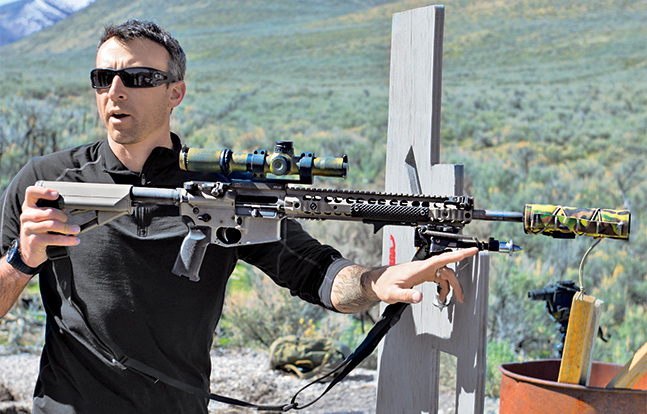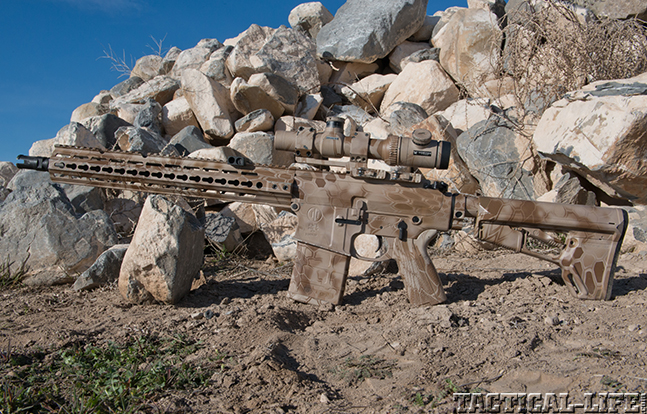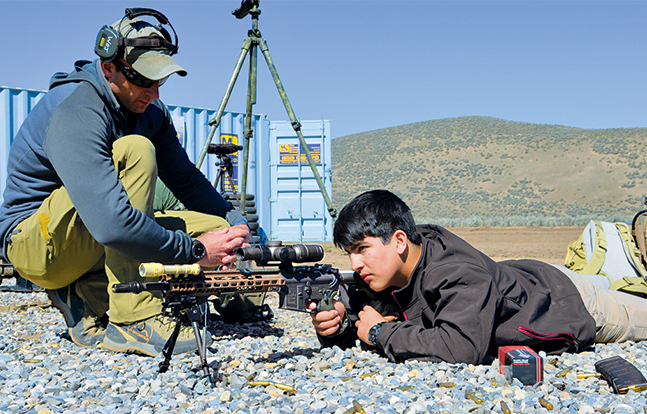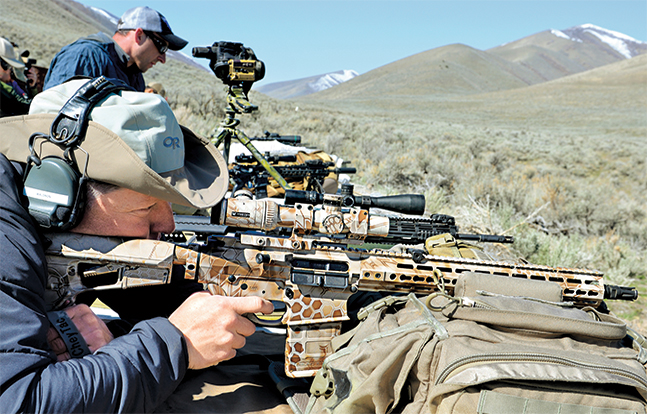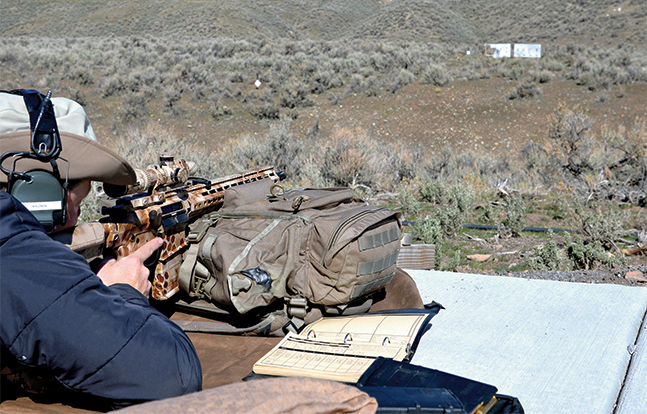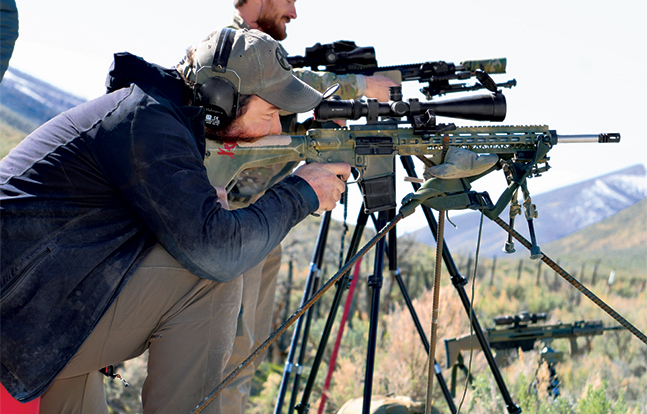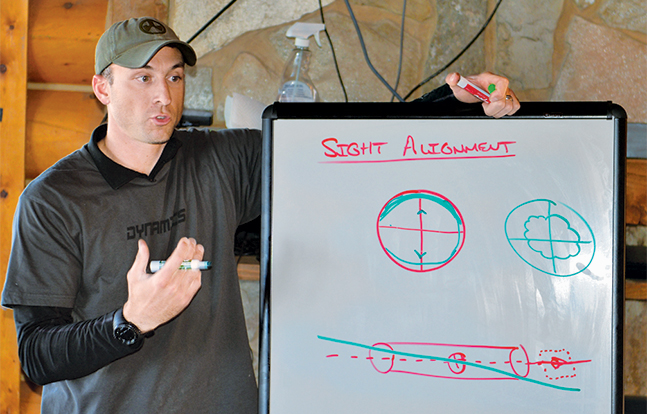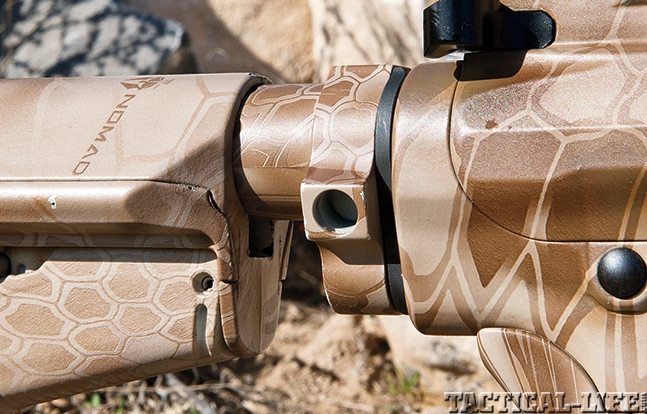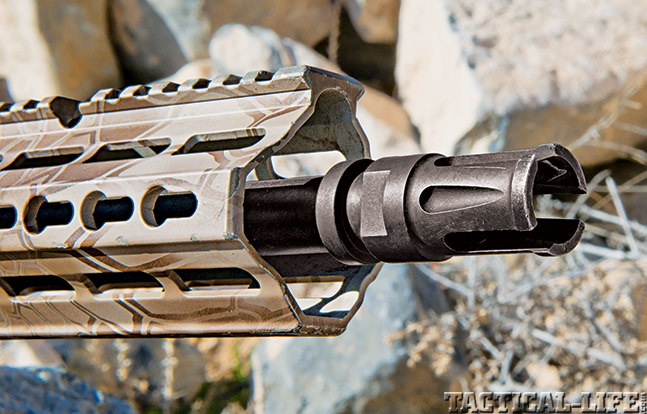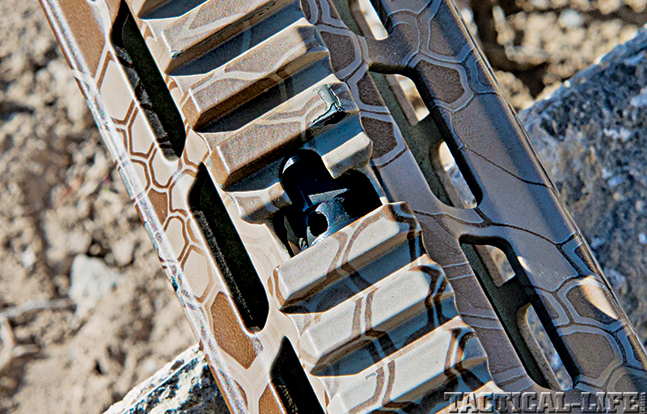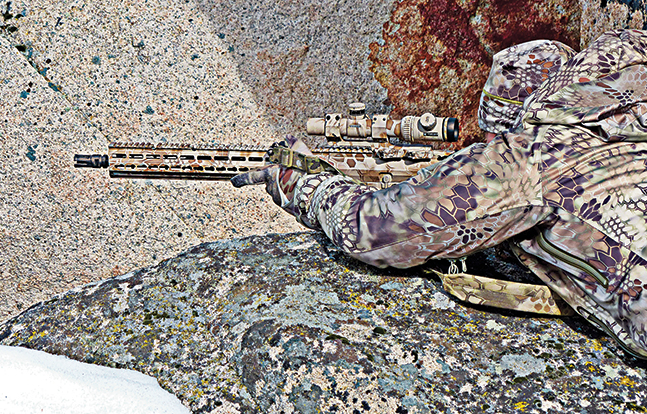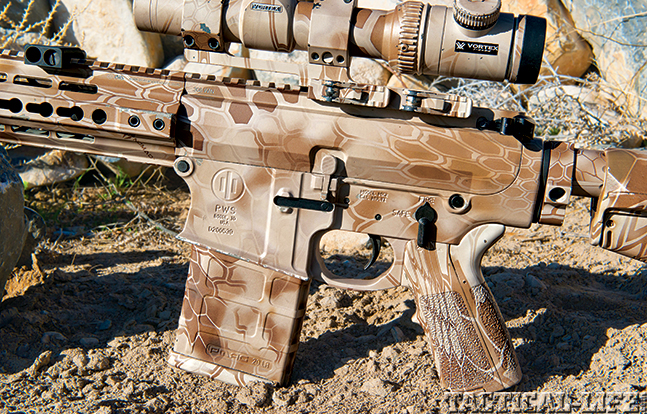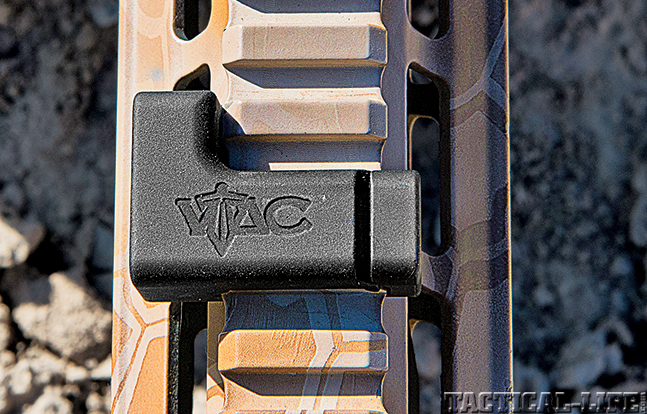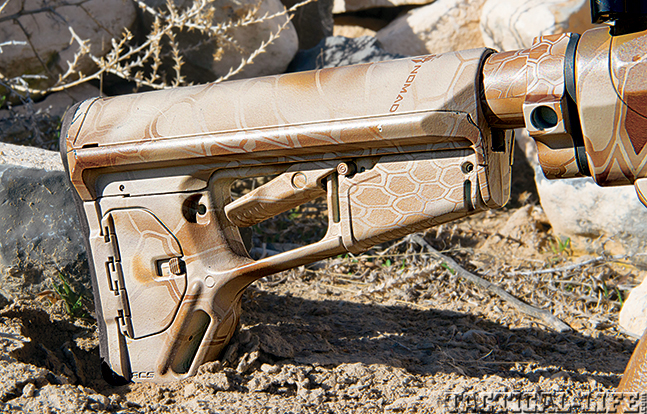Time and geography might change strategy and tactics, but for the past 200 years or so, accurate rifle fire in support of a small unit hasn’t gone out of style. However, where conventional doctrine focused on fighting as a combined-arms team, training often encouraged reliance upon indirect fire to support maneuver elements. But on the modern battlefield, where artillery and close air support may be unavailable or a threat to civilians, sustained precision fire may be the only option for small units under pressure. Unfortunately, sniper teams don’t grow on trees and squad-sized elements rarely merit them, so our combat units began to train select members of their own to both fight as part of the team and successfully pivot into a specialized role. The response to this need saw the creation of the designated marksman (DM) and the special-purpose rifle (SPR), a combination of specialized training and equipment that gave small units a combat multiplier at the squad and platoon levels. With the SPR—an accurized rifle with a magnified optic and precision ammunition—in the hands of a trained shooter, small units could better support themselves in both direct action and overwatch roles.
But the SPR requires more than just a better rifle. Its successful deployment requires a dedication to marksmanship, mastery of ballistics and optics, as well as the ability to work within a combat team. While tactics are unit and mission-specific, the fundamentals of mastering and deploying a precision rifle are not. To this end, Magpul Dynamics has created an SPR course designed specifically to teach the skills required to successfully develop precision shooters capable of supporting a small unit with accurate fire at distance.
So what exactly makes an SPR? To Magpul Dynamics instructor Caylen Wojcik, a combat-decorated USMC Scout Sniper and former sniper instructor, the definition is very mission specific. “The SPR is an enhanced rifle with interchangeable parts to those in the small unit. It properly features enhanced, magnified optics and the designated marksman is issued match-grade ammunition, but the rifle is not so specialized that it cannot serve as a battle rifle within the small unit.” The definition lends itself to a degree of interpretation when it comes to equipment and caliber. Some consider a 5.56mm an appropriate SPR, while others prefer a larger 7.62mm rifle for its extended range and its ability to penetrate materiel. Whatever the choice made by the unit, the rifle has to perform accurately and consistently. For this course, I ran the Primary Weapons Systems (PWS) MK216 in 7.62mm NATO.
Advertisement — Continue Reading Below
PWS Precision
The PWS MK216 is similar in appearance to the wide variety of AR-platform rifles chambered for the lager, .30-caliber round. But its appearance is where the similarities end. The MK216 features a long-stroke piston system built into a traditional AR framework. Its weight, controls, ergonomics and function will be familiar to users, with only a minor training curve needed to learn the assembly and disassembly of the piston rod and piston head system.
Advertisement — Continue Reading Below
“Shooters are encouraged to get creative in finding ways to establish a consistent, stable firing position whether using a sandbag, a rock, a rucksack or even a garment.”
PWS approached the 7.62mm AR platform with a degree of practical intelligence, noting that a simple “scale up” from the 5.56mm dimensions would be sub-optimal. The most obvious consideration is recoil. The 7.62mm NATO round typically carries three times the mass of the 5.56mm, and though the muzzle velocity is lower, there is a commensurate increase in power that is necessary to cycle the larger round. The increase in recoil from the smaller to the larger cartridges for both the initial and follow-up shots is considerable. With this factor in mind, PWS utilizes a gas-to-metal piston system. According to Stacy Nagy of PWS, “We created a one-piece moving assembly to minimize the metal-to-metal contact to reduce friction and overall wear.” The design increases dwell time of the round in the rifle, giving the recoil a steady “push” feel rather than a snapping “punch.” PWS also pairs the piston system with a nickel-Teflon-coated bolt carrier group specifically designed to complement the piston function. The PWS bolt has more mass than traditional designs, which also contributes to the increased dwell time. PWS also machined gaps and channels within the contact surfaces of the bolt carrier to reduce friction and mitigate debris fouling the action. Additionally, the MK216 features a four-setting adjustable gas block system designed to easily adapt to adverse conditions, hot loads and/or suppressors.
PWS rifle barrels are cut in-house and have a slightly heavier profile for greater accuracy and consistency throughout a greater temperature range. The barrels are free-floated inside the handguard, which is made from extruded 6061-T6 aluminum and features a Picatinny top rail and KeyMod attachment slots on the bottom and both sides. This system allows for directly mounting an optic on the top rail and the option of adding quick-detach (QD) accessories or Picatinny rail sections as small as 2 inches on the sides and bottom for a flexible and user-customized setup.
Advertisement — Continue Reading Below
The rifle I ran for the course is the personal rifle of Josh Cleghorn, a 17-year veteran of the U.S. military and the co-founder of Kryptek. As such, this rifle has a full Kryptek Nomad finish over the entire surface, including the Vortex scope. The rifle was highly recommended, so I was excited to see how it ran in the dust and altitude of Utah.
Know Your Weapons
Advertisement — Continue Reading Below
Magpul Dynamics’ approach to teaching the SPR course starts with understanding the enhanced capabilities of the SPR rifle as well as its limitations. The SPR is not a heavy-barreled, mile-shooting sniper rifle, nor is it meant to be. On the other hand, the benefits of a match-grade barrel and ammunition paired with a magnified optic merit both an academic and practical understanding. Where the average infantryman might realistically only be able to suppress a target at 500 yards, the SPR operator should be able to consistently deliver an accurately placed shot on target. To this end, Magpul Dynamics’ instruction begins with coverage of basic external ballistics and the relationship between the optic and environmental field conditions. For some, moving beyond the red dot or fixed-magnification optic is a big step.
“With the SPR—an accurized rifle with a magnified optic and precision ammunition—in the hands of a trained shooter, small units could better support themselves in both direct action and overwatch roles.”
The first major element in the SPR evolution is the study of the rifle’s relationship with the shooter’s head and face, from eye relief (the distance from the shooter’s eye to the optic) to the optic’s height over the bore (measured from the center of the optic to the center of the bore). The former dimension impacts more than just ballistics calculations; rather, it is critical in eliminating the physical variables to which the shooter might have to adjust when mounting and achieving a clear sight picture through the optic. The goal is to adjust the stock and scope until there is no shadow or eyestrain created by the optic, and minimal torque on the shooter’s head and neck. More than a few students chose to adjust their optic’s mount and stock length to create more comfortable and consistent cheekwelds and eye relief. At first blush, this seems overly basic, but building consistency throughout the weapon system is critical.
Advertisement — Continue Reading Below
Unlike military or law enforcement training where all of the shooters have the same issued equipment, each shooter in this course has a unique weapon system. Magpul Dynamics publishes basic course specifics, but within those requirements, students can outfit themselves according to their personal preferences. As such, there are no uniform, immediate adjustment tricks, so each student must absorb the concept of the stable shooting position and adjust their rifle accordingly. The ever-truthful tale of the bullet’s impact on target provides sometimes brutally direct feedback on what adjustments work and which do not. Ultimately, the focus on fundamentals—not accessories or gadgetry—gets each shooter in alignment with his weapon system.
For the PWS MK216, the adjustments were minor. The Vortex scope required no adjustment either vertically or along the rail. I lengthened the stock slightly to fit my arms and adjusted the ocular lens to my eye, but I was otherwise comfortable and zeroed without any problems.
Advertisement — Continue Reading Below
Establish Your NPA
Wojcik coaches the “natural point of aim” (NPA) as a critical fundamental that should be established no matter the shooter’s position. In some cases, it’s not possible, but learning the NPA and what it looks and feels like gives the shooter a significant advantage in consistency. In its most basic form, the NPA is where crosshairs align when the shooter is comfortable and relaxed behind the scope, with his head and face resting and oriented properly. The lesson with establishing the NPA is that any other position requires muscular input to hold the crosshairs in place. If a shooter, whether in the prone or a supported position, can align his rifle on target utilizing the NPA, the need to make any last-second micro alignments will be minimal. The shot will break more cleanly, and the rifle will return from recoil nearer to where it began. The alternative is a floating alignment held largely by muscle that must be modified to include the trigger break and subconscious tightening of the rifle against the shoulder. Which muscles were being utilized while aligning the rifle and how much is anyone’s guess, so a return to the previous firing position offers little to no baseline. Alternatively, a properly established NPA is that baseline, and it’s conveniently the best position to fire a shot.
The Magpul Dynamics team walks the students through several drills that help them establish the NPA and illustrate its value. The most notable drill was having the shooter align his rifle, close his eyes and break the shot. A shooter with a properly established NPA will hit the target precisely on the point of aim. The shooter who is floating the crosshairs with muscle alone will get a shot placement that reflects his body position, not the crosshairs, as the eyes are no longer correcting the body. Those shooters accustomed to taking dynamic shots at shorter ranges with a light rifle and smaller calibers had the most to learn. Close-quarters and off-hand shooting require a different set of skills and short of a consistent and properly adjusted cheekweld, the NPA is less of a factor. But extend the range and require precision, and the NPA becomes critical.
Advertisement — Continue Reading Below
External Ballistics
One ballistic element often overlooked by the tactical shooter is muzzle velocity, particularly as it relates to a bullet’s flight at extended distances. The typical process for a rifleman is to zero at a known distance and reference a table to estimate holdovers for targets at various distances. But a properly configured SPR is capable of more, and the shooter must grasp the ballistic concepts that support the added capabilities. Both adjustable optics and subtended crosshairs allow SPR shooters to control shot placement rather than guessing how far a red dot or iron sight is aligned above a target.
Advertisement — Continue Reading Below
Magpul Dynamics uses a barrel-mounted MagnetoSpeed chronograph to quickly calculate the average muzzle velocity for each student. This translates into unique and specific information for the shooter’s rifle and load. Armed with this information, the shooter can now utilize a ballistic calculator and the enhanced optic to consistently predict projectile performance at various distances.
Obstacles & Tripods
Wojcik moves students through the fundamentals in the first two days, and the second afternoon and third day are all about shooting from obstacles and field-supported devices. With the ballistics information in hand and the optics manipulation practiced, shooting from obstacles becomes the focus of the training. Again, the fundamentals come full circle with the NPA returning as the priority. For example, the drills become not just an exercise in shooting off of a rock, a rail or a structure, but to position one’s rifle and body to establish a consistent NPA, no matter the condition. Shooters are encouraged to get creative in finding ways to establish a consistent, stable firing position whether using a sandbag, a rock, a rucksack or even a garment.
Wojcik is an advocate of utilizing a tripod for long-range shooting. Adjustable from a low sitting position up to a standing height, and equipped with a Hog Saddle rest adapter, a tripod can adapt to a variety of terrain surfaces. The added benefit of the tripod is that it can fully support the weapon, allowing the shooter to rest if his role is an overwatch position. A modern tripod featuring light and rugged carbon-fiber legs with a gimbaled grip lock is a piece of gear all but the most minimalist-minded should consider adding to their inventory. But a fancy store-bought variety isn’t particularly necessary. Several students shot from strapped or lashed sections of rebar, and it worked remarkably well. Again, the concept was to make the surroundings work for the shooter. For those who can’t bring themselves to carry or build a tripod, a crossed set of trekking poles can make for a reliable substitute.
Students of the SPR course found themselves taking high-angle and cross-canyon shoots off the Utah cliffs and valleys. As a capstone, Magpul Dynamics adds movement and time to pressure the shooter to get to a location, get into a stable shooting position and deliver accurate, long-range shots across varying terrain.
Training Takeaways
My progress through the course was enhanced immensely by the ease and consistency with which the PWS MK216 operated. True to its advertising, the rifle delivers the best of both worlds, providing significantly minimized recoil with the heavier projectile. I experienced no failures, and the final surprise was the lack of fouling when I cleaned the rifle after the course. The piston system dramatically eliminates the amount of carbon and fouling typically created by the 7.62mm NATO cartridge in an AR platform. This factor alone makes the MK216 notable. It’s rare to have a rifle exceed its marketing claims, but the PWS MK216 definitely does.
The Magpul Dynamics SPR course bridges the gap between the dynamic carbine shooter and precision rifle disciplines. Rarely is a student balanced in both worlds, and this course is both a check on their respective skills and a challenge to expand them, whether they’re taking an AR out to longer ranges or engaging multiple targets at distance from a field-expedient, but supported, firing position.
FOR MORE INFORMATION
- Magpul Dynamics: magpuldynamics.com; 877-462-4785
- Primary Weapons Systems: primaryweapons.com
